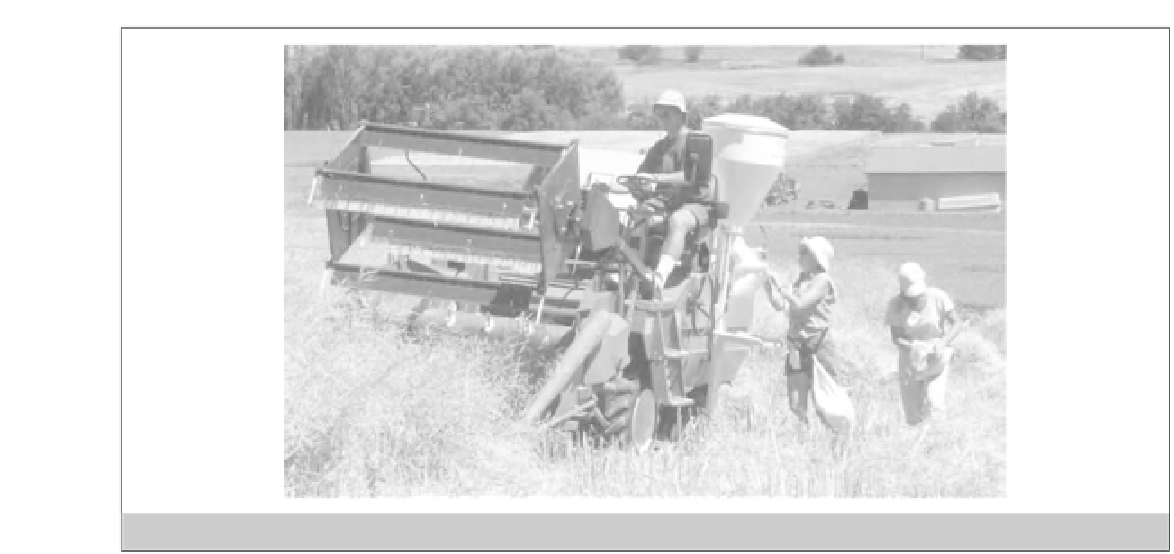Agriculture Reference
In-Depth Information
Figure 9.7
Small-plot combine harvesting rapeseed trials.
A variety of harvesting machinery is available includ-
ing small plot combined harvesters (e.g. Hege or
Wintersteiger) that will cut, thrash and partially clean
seed samples (Figure 9.7) and harvesters that will dig
root crops such as potatoes. Often very small plots (or
individual plants) require to be harvested separately. In
some cases this can only be achieved by hand harvest
(e.g. pulling single plants or hand digging individual
produce). In the case of grain crops the small plots can be
hand harvested but the seed removed from the selected
plants by small-scale mechanical thrashing.
•
Designing experiments or evaluation trials. What
types of experimental design will be used for
each trial (unreplicated designs, randomized com-
plete block designs, lattice designs and split-plot
designs). Having decided on an appropriate design
then field plot plans need to be produced, plant-
ing material organized and arranged in order for
planting.
•
A
number
of
clerical
tasks
will
be
required
such
as
producing
plot
labels
or
harvest
labels
(Figure
9.8);
genotypes
lists
and
perhaps
score
sheets.
After field (or other) trials have been planted then
data will be collected throughout the growing season,
at harvest and post-harvest.
•
USE OF COMPUTERS IN PLANT
BREEDING
As data are collected, each variate assessed needs to
be analyzed. More detailed analysis of over-site trials
and analysis to examine relationships between variates
will be carried out.
•
Many routines in a plant breeding programme follow
a cyclic annual operation. Therefore the same tasks
(or similar operations) are carried out on a seasonal
basis. In general terms a simple breeding scheme may
involve:
•
Statistical analysis is only one step in data interpreta-
tion. Further data examination techniques of scatter
diagrams; histograms or bar charts can be used to
obtain a better understanding of data.
•
Deciding which breeding lines are to be tested. Which
lines are to be tested and in which environments?
Which characters are to be evaluated from each trial?
What control or check genotypes will be included in
each trial for comparisons?
•
Selection will be applied based on information col-
lected. Breeding lines will be divided into various
categories (e.g. definitely select and advance to next
stage, not quite sure so repeat in smaller trials, discard
from the breeding scheme).







